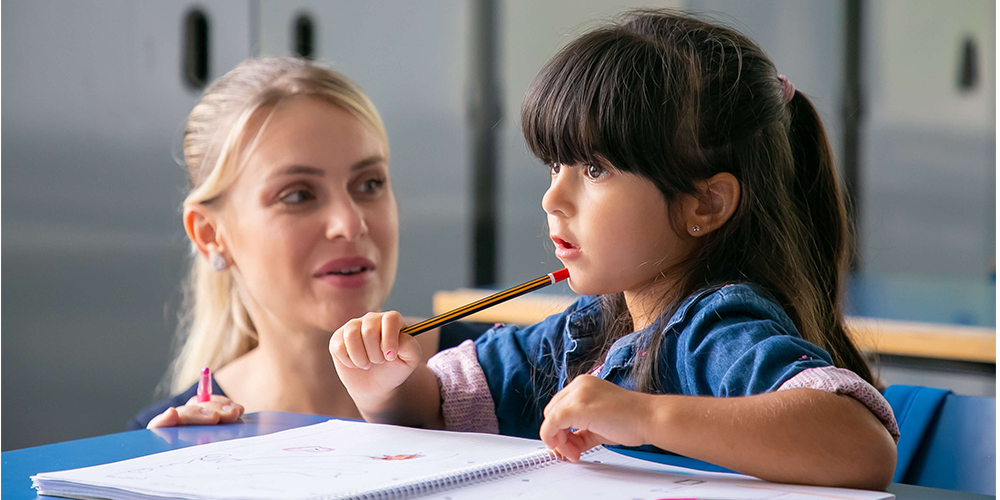News & Events
3 Tips to Encourage Cognitive Flexibility in Children

Cognitive flexibility is the ability to look at a situation from a different perspective and make better decisions. Someone who thinks flexibly can better adjust and handle new changes in the routine as compared to a stuck thinker.
In the fast-moving world, children should know how to deal with quickly changing situations and adapt to them. Flexible thinking will make it easy for them to go with the flow both inside and outside the home. On the other hand, children with stuck thinking find it hard to adapt to sudden changes, new assignments and responsibilities, which can affect their success in future. Below are some of the ways through which you can build cognitive flexibility in children.
Restrict inattentional blindness
Inattentional blindness happens when someone fails to notice things in front of their eyes due to focusing on a designated task. The below example will give you an idea about it.
Spot the number of O’s in the following sentence.
Several minuscule sounds that are produced in the environment simulate our auditory system. An enormous amount of data gets processed by our sensory systems.
The correct answer is 12. You may or may not have found all the twelve “o’s”.
But wait. Can you recall what the sentence was all about without reading it again? Most people would have paid no attention to the content of the sentence, especially those who studied in a system of education that only favours efficiency and uniformity. This is due to inattentional blindness that refrains one from looking into things in plain sight due to their attention on some other task.
Children need experiences that help them break the neutral pattern that makes them believe that there is only one way to approach problems or any information. You can use the following strategies to create such experiences for your children.
Provide them opportunities
Let children inquire, discover, evaluate information and draw their conclusions; this will improve their cognitive ability and help them devise strategies that increase the probability of reaching the desired outcome.
Avoid using restricted language
If you use such language in front of your children that encourages only one type of approach, then stop using it. Help your children look for alternate causes and solutions to a problem.
Give them more time
In the classroom when teachers ask a question, many students know the answer. But even if one student raises their hands, others do not even put the effort to consider their response.
In addition, when teachers say “Correct answer” to a student, before others think of the answer, there is a probability that their brain will not make the mental effort to find the solution because dopamine does not release when there is no reward. Best schools in Baddi take care of such things, they give students space and time to contemplate in class which helps them develop creativity.
Foster divergent thinking
Divergent thinking, as the name suggests, is the process of seeking new possibilities and solutions. Pre-schoolers are exceptional divergent thinkers, but as they grow, their thinking becomes more convergent because they have to quickly find the answers and move on to the next thing. Though convergent thinking has its place, divergent thinking holds a great value. You can do the following things to encourage it.
- Help them use divergent thinking in everyday life, such as making their meals in an innovative way and a lot more.
- Be open to new thoughts and ideas. Help your child understand, accept and embrace their mistakes.
- Value children's creativity, not only their grades, as grades do not always reflect the child's capability.
International public schools encourage divergent thinking in children by asking open-ended questions, allowing them to express themselves, encouraging students to collaborate and a lot more.
Teach perspective taking
Perspectives-taking means putting oneself in others' shoes and thinking about what you would do if you were in their place. It is one of the most vital skills that come under cognitive flexibility. Understanding perspectives help children maintain good social relationships. It also makes them capable of decoding people's actions and predicting what they can do further.
Perspective taking helps generate empathy, improve interpersonal problem-solving skills, regulate emotions and behaviour and prevent oneself from bias and stereotypes. To help children develop their perspective-taking skills, use the below methods.
- Help your child identify and examine their triggers. For example, why do they want things to be done in a certain way? Encourage them to speak about their feelings and help them know how their behaviours affect other people.
- Read out stories such as the “Blind men and an elephant” to your children to help them understand how different points of view lead to different conclusions. Books like “You Are Not Small” are great for teaching young children that different people have different perspectives.
- Watch educational movies or documentaries such as “The kindness diaries” that consist of deep discussions on education, health care, war, culture and acts of service. All this will help your children see the world from a different perspective.
- Talk about historical events and discuss what could have changed if something had been done differently. Like if the British East India Company were not allowed to enter India, our ancestors would not have faced atrocities.
Bottom line
Cognitive flexibility makes kids' brains adaptive to changes that are happening around them. Considering multiple points of view, finding new ways to approach a problem will help them develop optimal solutions. Children's cognitive flexibility will help them deal with everyday challenges and complex social situations. All of this will help them become better individuals and better citizens.

